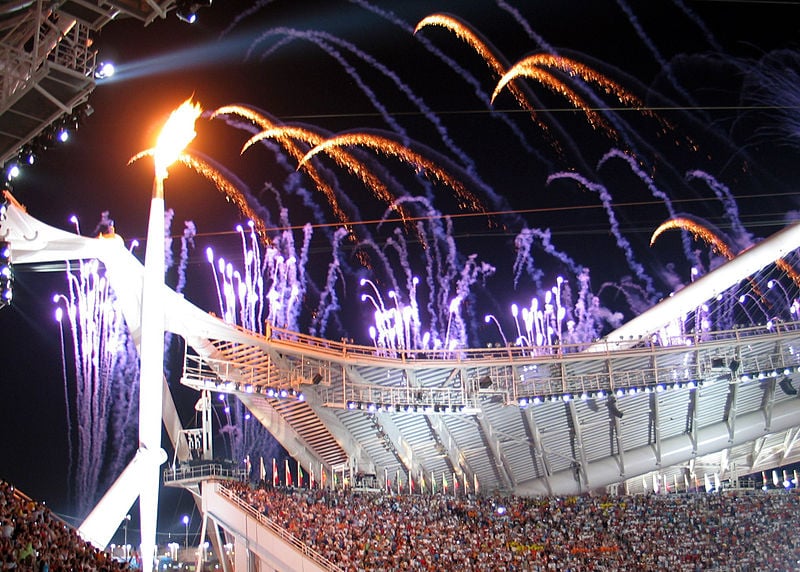
On August 13, 2004 Athens and the whole of Greece showcased its history to the entire world during the spectacular opening ceremony of the 2004 Summer Olympics.
It was a night that will live forever in the memory of the 72,000 spectators at the Olympic Stadium and the hundreds of millions of television viewers around the world watching at home.
It was a night that made Hellenes throughout the world proud to be Greek.
What made the 2004 Summer Olympics’ opening ceremony remarkable
The ceremony was lauded by the international press and featured technologies that had never before been seen in any stadium or opening ceremony, including a giant pool with a slip-proof iridescent fiberglass flooring that drained its water in three minutes.
Beautiful, completely innovative lighting, and an ingenious staging system utilizing a complex network of automated cables that lifted, maneuvered, and choreographed floating pieces of sculpture to move in synchronization with the music and narrative of the opening ceremony were also part of the jaw-dropping spectacle.
The ceremony also featured an “artistic section” that showcased Greece’s history to the world. This portion of the show illustrated the culture of both ancient and modern Greece, combining them in a two-part drama that explored the resonance of ancient ideas on Greece’s remarkable present.
The two sections were called “Allegory” and “Clepsydra,” meaning “Hourglass.” The Allegory section featured a poem by Nobel-prizewinning Greek poet George Seferis titled “Mythistorema 3.” It was a surreal performance that featured centaurs, Cycladic art, and Archaic period architecture.
The second section, Clepsydra, connected ancient Greek civilization to the foundations of human life and existence. The sequence, which had an actor playing Alexander the Great, displayed images from the Hellenistic period, as well as Byzantine art. The last part of the section highlights a pregnant woman, who represents the source of life and all humanity and history. The woman lowers into a pool of water and the stadium lights create an image of the stars in the galaxy.
Nearly fifty world leaders attended the event in which approximately fifteen thousand athletes from 202 countries participated. It was a historical first for international television, being the first-ever international broadcast in high-definition, thanks to the US channel NBC and the Japanese channel NHK.
All the skeptics who had warned that a small country like Greece could not efficiently host a complicated and demanding modern event such as the Olympics were completely silenced.
Years later, two American experts who worked on the Athens 2004 bid and for the Athens Organizing Committee wrote about the amazing experience they had working for the success of the Games:
“The sight of Greeks coming together and delivering a world-class event was deeply impressive and not to be forgotten or dismissed,” said Mark Steitz and David Dreyer, senior principals at TSD Communications.
“You succeeded because of Greek skill, Greek character and Greek work,” they added. “And, yes, your ability to do things at the last minute. We had heard stories of Greek problems, of past bids for the Games gone awry, of negative national traits. We saw the opposite. We were met with humor, patience and good will. Philoxenia was quite for real.”
See all the latest news from Greece and the world at Greekreporter.com. Contact our newsroom to report an update or send your story, photos and videos. Follow GR on Google News and subscribe here to our daily email!



